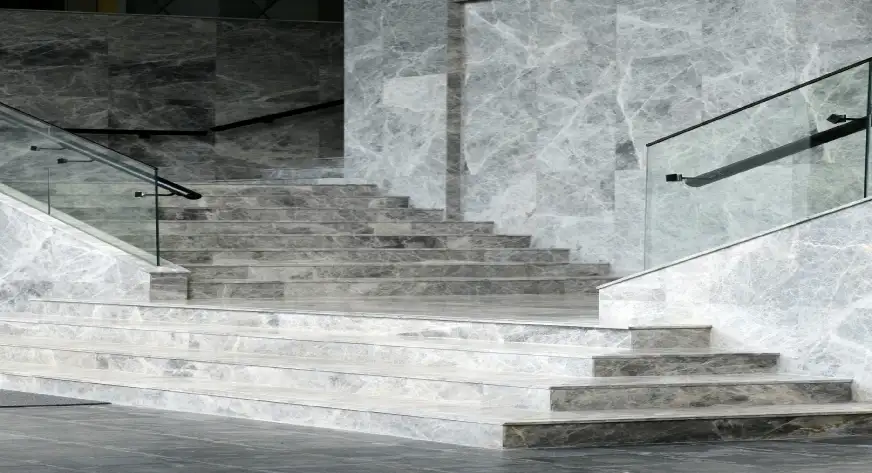When you’re choosing natural stone for your home, marble and granite are two popular and beautiful options. They might look a bit similar at first glance, but they have important differences that can help you decide which one is best for your space.
Here’s a simple way to understand how marble and granite are different:
How They Are Formed
The biggest difference between marble and granite is how they are created deep within the Earth.
- Marble: This stone is formed from limestone that has been under very high heat and pressure for millions of years. This process changes the limestone, making the tiny bits inside it grow and interlock. You can think of it as forming in the sea. It’s mostly made of something called calcium carbonate.
- Granite: This stone comes from hot, melted rock (magma) that cools down slowly deep inside the Earth. Because it forms this way, granite is mostly made of strong minerals like quartz, feldspar, and mica, which give it a grainy look. It’s rich in silicates.
Difference of Marble vs Granite

| Feature | Marble | Granite |
| 1. How It’s Made | Formed from limestone under heat and pressure. | Formed from cooled magma, rich in strong minerals. |
| 2. Appearance | Elegant, smooth, with unique veins (wavy patterns). | Speckled look, with visible mineral grains. |
| 3. Strength | Softer, more prone to scratches and stains. | Harder, resists heat, scratches, and damage. |
| 4. Care & Maintenance | Needs frequent sealing, gentle cleaning, and re-polishing. | Less maintenance, sealed once every 1–2 years. |
| 5. Best Use | Ideal for indoor decorative areas like bathrooms, living rooms. | Great for kitchen counters, floors, and outdoor spaces. |
If you’re considering granite, Indian Black Granite is one of the most popular and durable options available.
Uses and Applications
Granite is a great option because it is very hard, strong, and can handle heat well. This makes it perfect for kitchen counters, bathroom counters, and places where many people walk, like public areas and floors. It’s also a popular choice for outdoor use because it can resist weather and other outdoor conditions.
Marble is best for indoor areas where looks matter and there’s less foot traffic. It’s often used for walls, floors, and bathrooms, but it’s not ideal for kitchens or outdoor use because it can stain and get damaged easily.
Cost
The cost of natural stone varies significantly based on factors like rarity, quality, origin, and design complexity.
Granite
- Granite is considered a medium-priced option for countertops.
- It is often cheaper than marble.
- In India, the price of granite typically ranges from ₹100 to ₹600 per square foot.
Marble
- Marble is seen as a luxury material and is usually more expensive than granite.
- In some areas, marble costs around $125 to $200+ per square foot, including installation.
- In India, the price ranges from ₹200 to ₹3000+ per square foot, depending on its origin and rarity.
- Its luxury image increases its market value, making it more costly.
Conclusion
Both marble and granite bring timeless beauty and strength to any space. Your final choice depends on your budget, the look you want, where you will use it, and how much maintenance you’re willing to do. For high-traffic areas and kitchen countertops, absolute black granite is a great option because of its durability and resistance to damage. If you prefer a more elegant and classic style for areas with less use, marble is perfect with its unique veining and luxurious feel.
🛠️ From Homes to Commercial Projects — We’ve Got You Covered
At Lexus Stones, we work with homeowners, architects, and contractors to supply the best natural and engineered stones. No matter the size of your project, we provide reliable service and premium-quality materials.
👉 Contact us today to discuss your requirements or get a custom quote.
GET IN TOUCH
CONTACT US
WhatsApp us


